How to Improve Basketball Quickness
Basketball is a game of short bursts of quickness, rapid changes of direction, and snap-of-a-finger acceleration. That’s why, each day, my email inbox is flooded to the brim with guys asking me how they can improve basketball quickness.

Really, this is a complex question, but I’m going to boil it down to three factors.
The first is mechanics.
Mechanics
To really out-race the competition in basketball, you’ve got to learn how to place your body in the best positions to properly recruit muscles that will give you as much speed as possible.
This comes down to mechanics.
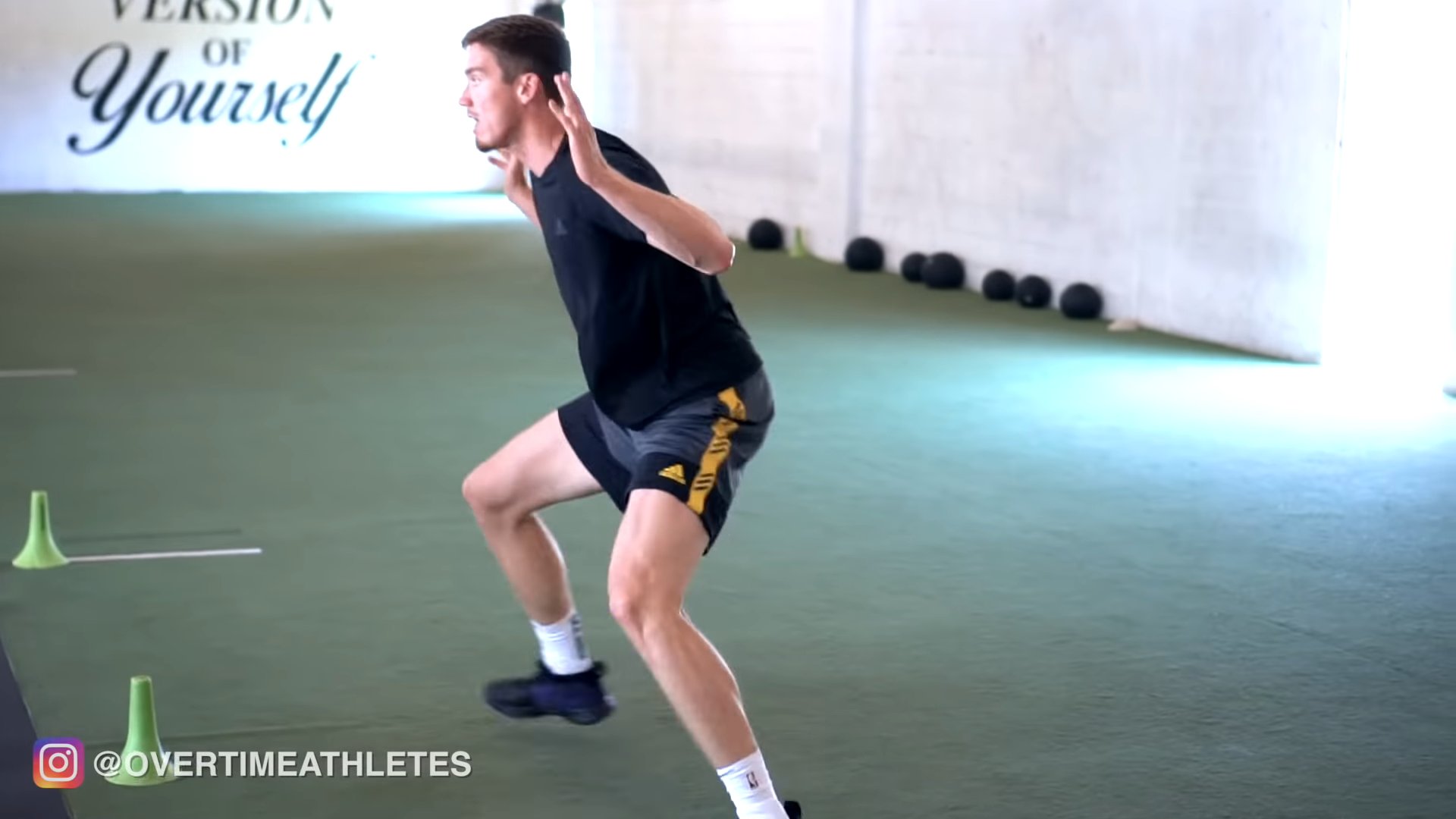
Whether you’re running around a screen, cutting towards the ball, or locking down a player with the ball, you’ve got to learn how to move correctly.
Here are a few tips…
Tips for Lateral Movement
- Don’t let knees collapse inward while moving
- Refrain from clicking the heels, or even bringing the feet within hip width when shuffling. If you do this, you could get dropped with a simple change of direction from an offensive player
- Keep the chest up and butt down
Tips for Cutting to Get Open

- Start slow. It takes the average person 1/4th of a second to react. If you walk slowly towards the key, then quickly change direction and dart toward the three point line, the defender will most likely lag behind you
- Stay low for your first 2-3 steps. This will help you build speed quickly
- Don’t get stuck in the mud. When you plant and turn, don’t slam the foot on the ground. This creates a lot of downward force, and if you’re not properly trained, this makes it harder for you to change directions on a dime
Ideal Acceleration Position
Basketball requires you to build speed quickly. As such, it’s important you get into the right position to build as much speed as you can.

The proper acceleration position is simple to get into, but not easy.
First, you want a forward body angle. It’s that forward lean you see sprinters in when they take off from the blocks.
Next, you want your knees to drive up towards your chest and back into the ground behind you. I like to think of the knees pumping like pistons, but instead of up and down, they’re moving up toward your chest, then back into the ground at the same angle as your torso.
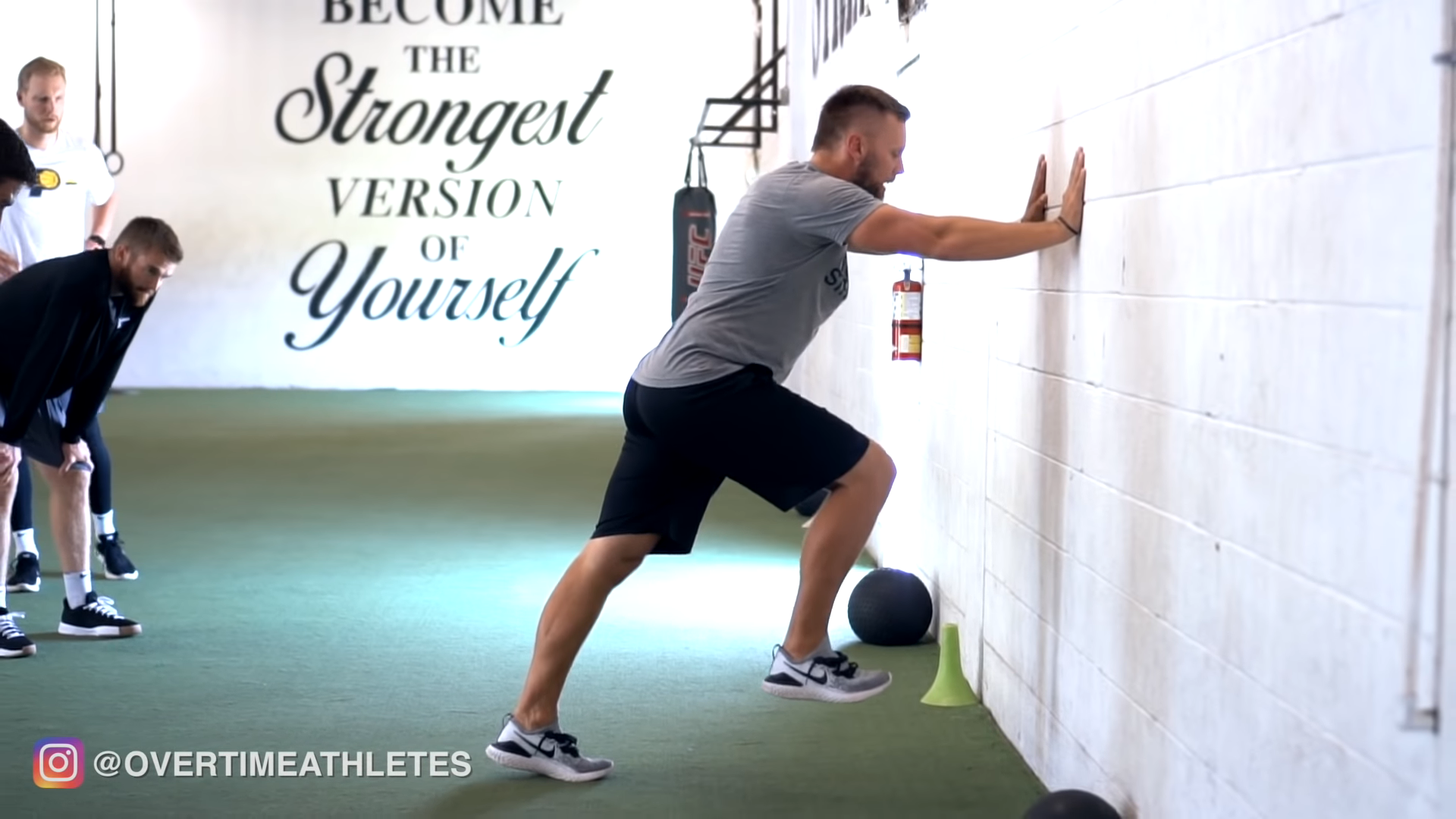
Get these two things right, and you’ve got yourself a pretty good base of acceleration.
Force Production/Absorption
Once you have your mechanics down, the next step in to improve basketball quickness is to pump some power in your step.
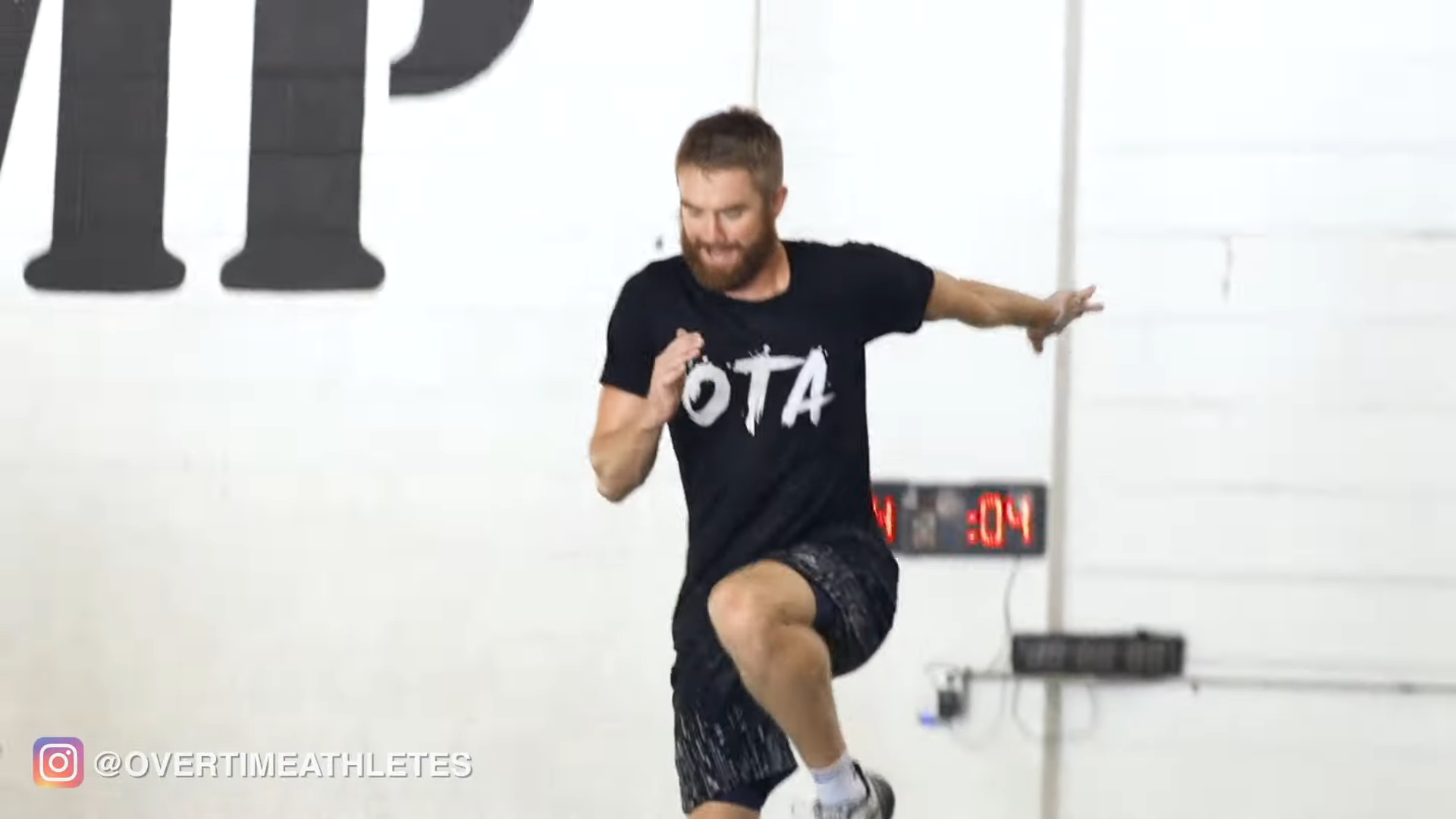
Now there are two parts to this, force absorption and production. And I’m going to share an example to display the importance of both…
Let’s say you’re defending a fast player. To keep up with him, you need to produce enough force laterally.
So, you’re moving with him, and he does a quick cross over. This requires you to plant, and change directions. The speed at which you can plant and recover depends on your force absorption ability.
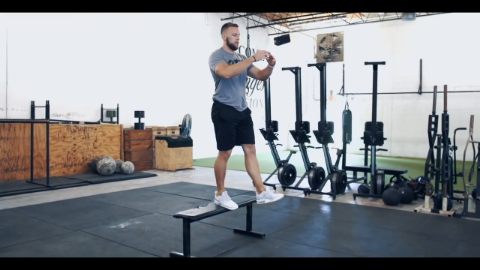
If it’s lacking, you’ll be slow to switch directions. If it’s elite, not only will you be able to change directions rapidly, but you’ll also be able to produce more force out off of your push off.
To elevate both of these abilities, you’ll look to plyometrics.
Start off with low level connected jumps such as pogo jumps, squat jumps, lunge jumps…

Then raise the bar with plyometrics in the lateral plane, such as skater jumps, lateral broad jumps, ascending ski jumps, and alternating bounds.
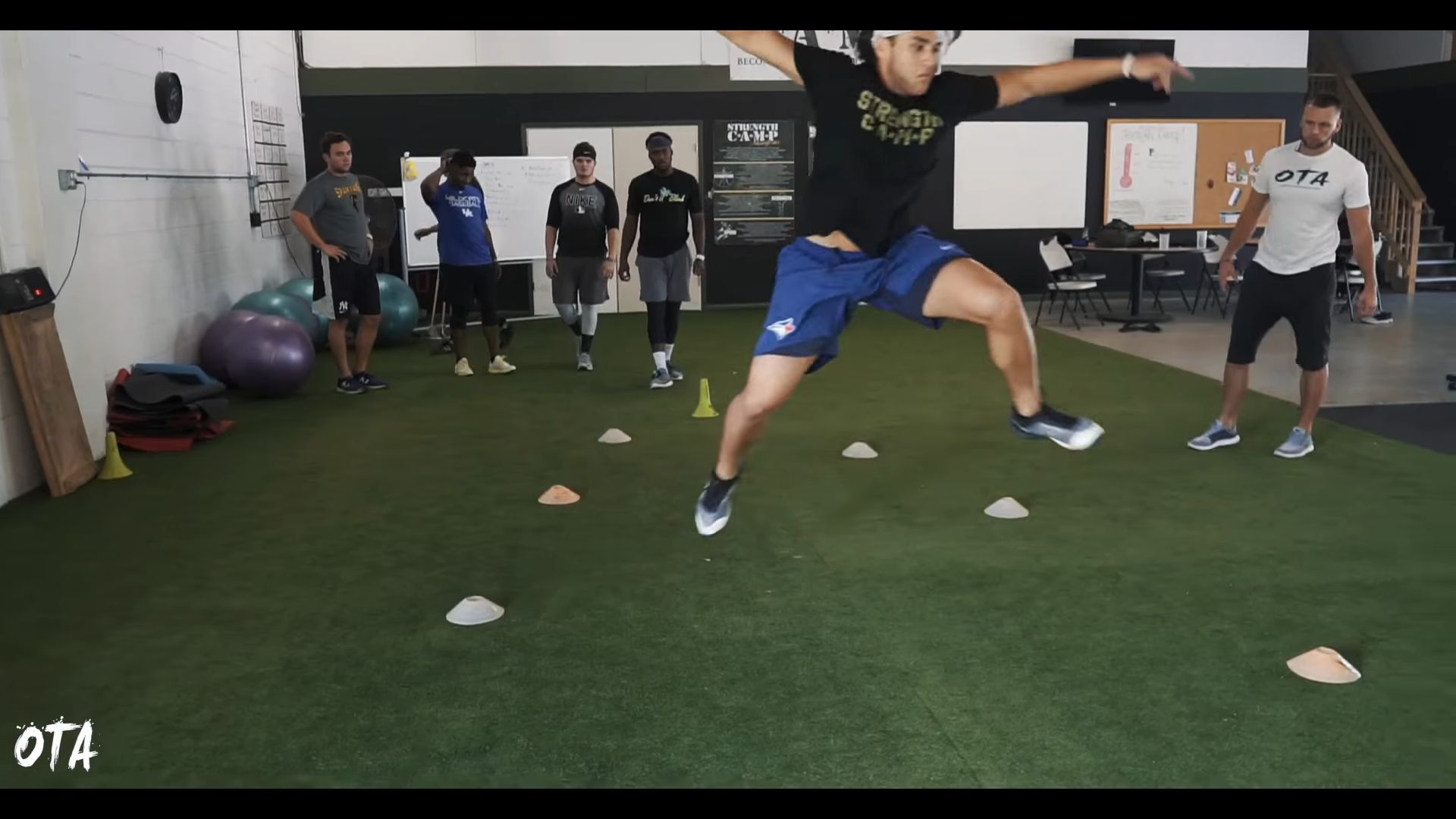
To top all that off, move towards reactive jumps.
One of my favorites for lateral force production is 90 degree jumps.
To perform these, you’ll do a sub maximal single leg broad jump, land on one foot, and push out laterally.
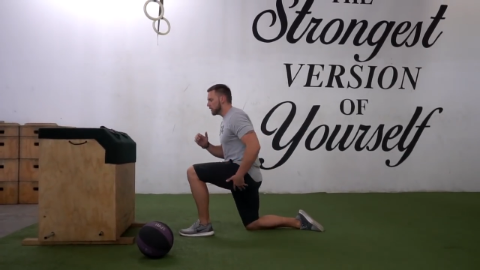
When you perform this move, use caution, as it is advanced. If you haven’t prepared your body for them, you could injure yourself.
Reactive Ability
The final piece of the basketball quickness puzzle is your ability to react during the game.
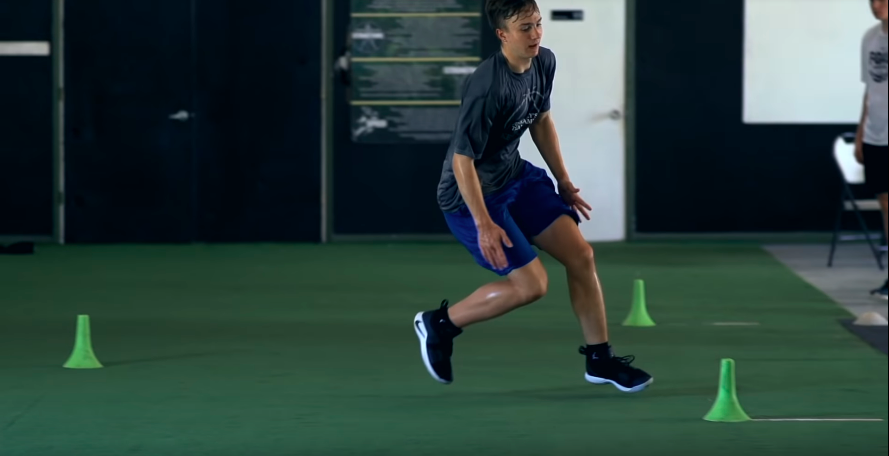
There are many things you need to react to in basketball. Your teammates movement, the opposing team’s movement, a shot, a blocked shot, ball movement, a teammate setting a screen for you.
You need to teach your body to respond appropriately to both auditory and visual cues.
For example, you have to teach your body to instantly change directions when an opponent crosses over, or when they pull up for a shot, you need to teach your body to close out on this.
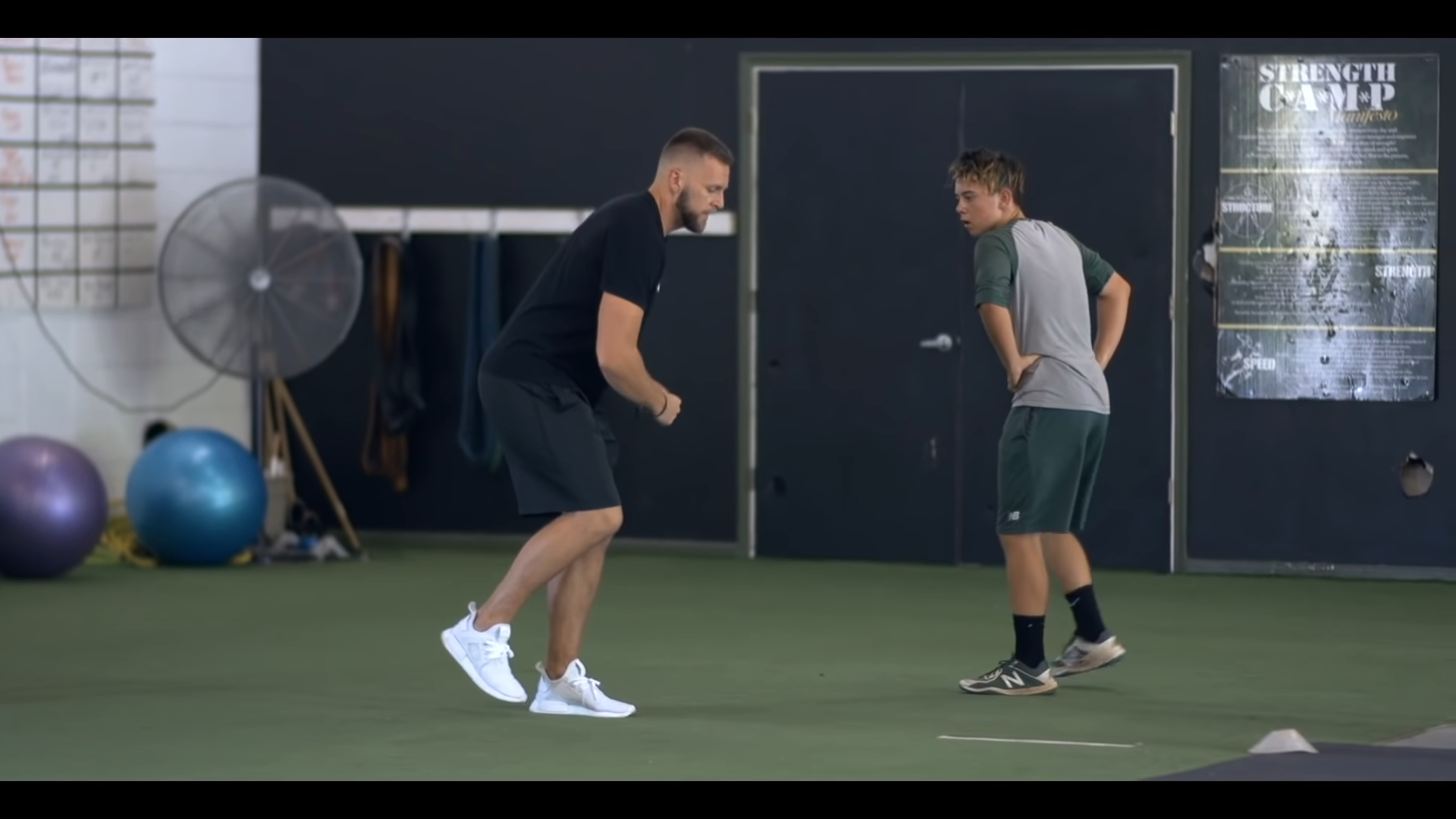
With specific reactive drills you can improve your quickness and ability to react when these things occur in game.
One of my favorite ways to do this is with a lateral shuffle.
First, I’ll point which direction they need to go,
Then, I’ll say which direction they need to move,
Finally, I’ll have them mirror another athlete, following him wherever he goes.
View this post on Instagram
There are many other variations of drills that you can make sports specific as well, but I like to make things as simple as possible, and have the athletes perform them at a high level.
More Help With Basketball
One of the biggest issues I see with most basketball players is their lack of strength.
Especially in young guys.
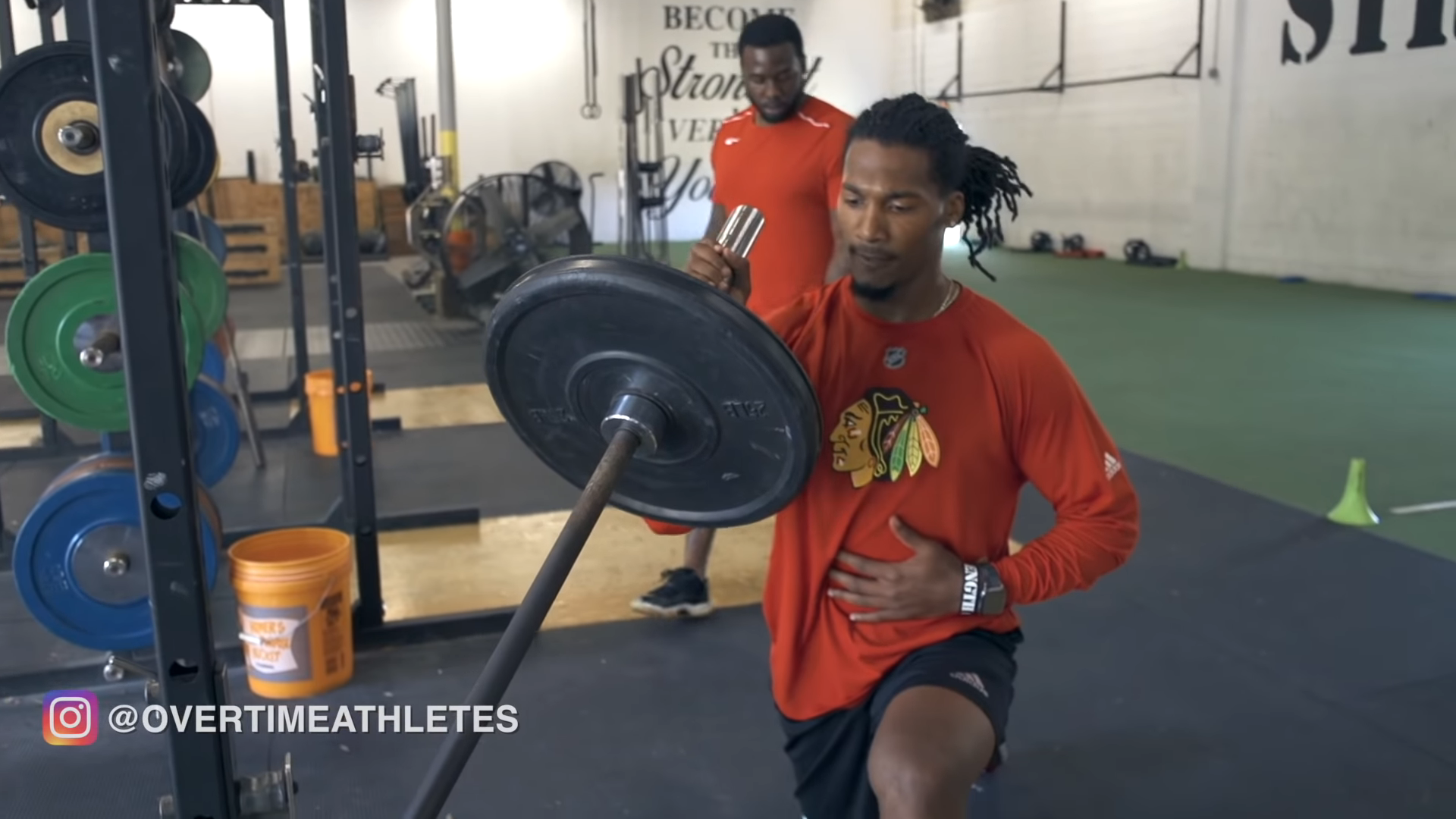
Most young players shy away from weights, thinking it will make them big and bulky, when in reality, you don’t get big and bulky unless you’re trying to.
And most guys who do take time to build strength don’t build the right kind of strength.

See,
Over my years as a coach, I’ve learned a way to build strength that seamlessly translates into power. It’s a unique kind of strength that is more dynamic, functional, versatile than the kind of strength that bulky powerlifters have.
To learn how to harness this kind of strength training for yourself, check out my free Advanced Strength Series, where I’ll show you how to build this kind of athletic strength.
Check it here: